Via Romea Germanica XII
Trento, Italy
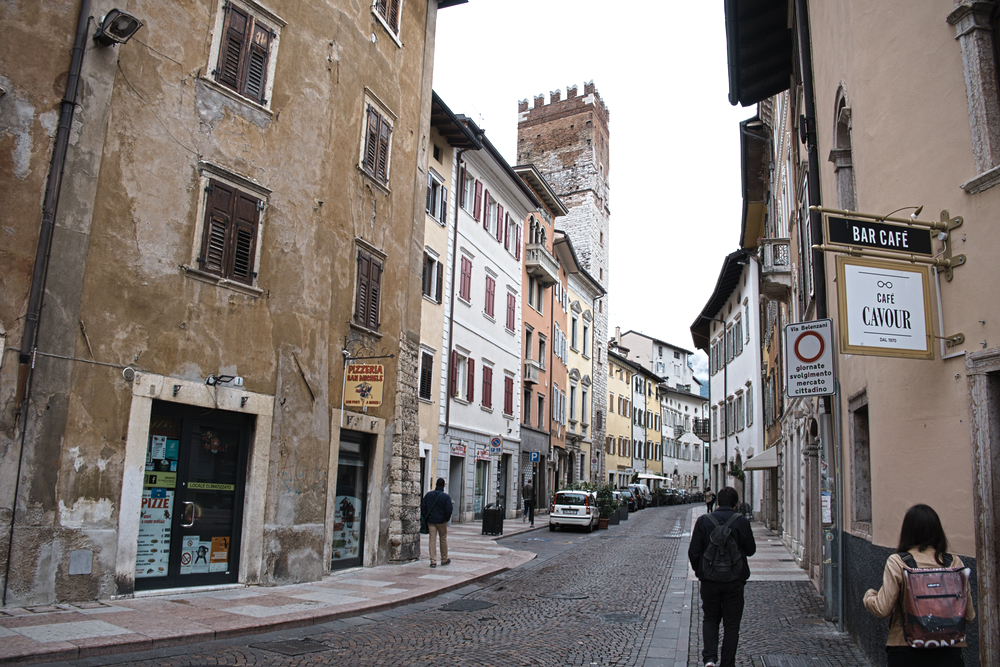
Dawn, Trento, Italy
A rest day for us. We don't even mind the rain today, for we can go out whenever the deluge lightens.
Welcome to the Peripatetic Historian's multi-part series about hiking the Via Romea Germanica.
If you have stumbled across this installment by accident or a fortuitous Google search, and have no idea what is happening, you might prefer to begin at the start of the series, here: Introduction to the Via Romea Germanica
Otherwise, let's return to our story, already in progress.
Trento is a very beautiful city. When the Romans conquered this region, they founded a city here in honor of the sea god Neptune. They named their city Tridentium, the Latin root from which, in later centuries, the name Trento evolved.
Once again we were balancing the desire to catch a little rest with the urge to see everything we could. We chose to hit two of the principal sites in the city, the Duomo (Cathedral) and Il Castello del Buonconsiglio (also known as the Palace of the Prince-Bishops of Trent).
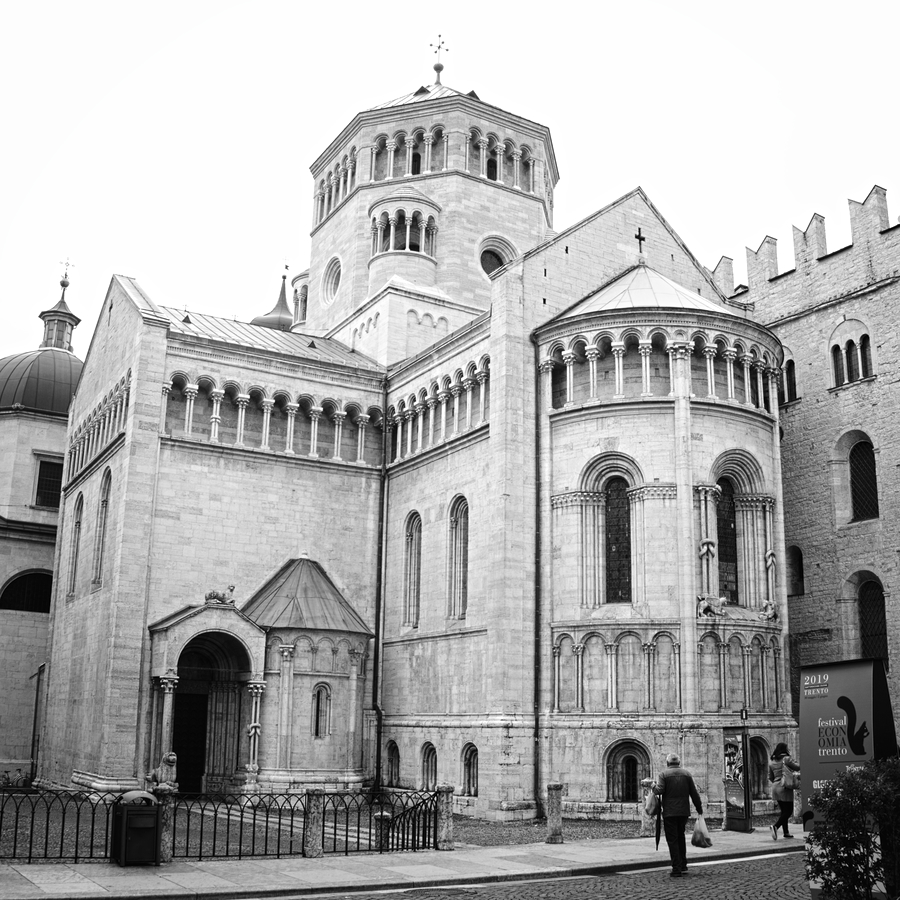
The Duomo, Trento, Italy
Our first stop was the Duomo. I was surprised by how small it was, compared to similar cathedrals in Italy. It is disproportionate to its importance, for it was here that the Catholic cardinals and bishops met to weigh the claims advanced by the Protestant reformers. This theological gathering, the Council of Trent, ran from 1545-1563. After vigorous debate, the Catholic representatives judged that the Protestant reformers had no valid support for their claims. In fact, the church’s beliefs were correct, and the Protestants were simply wrong. The schism between the two wings of the church, opened by Martin Luther, was reinforced and remains in effect to this day.
Between the walls of this dark, rough-hewn stone cathedral, Catholic clergy met and wrestled with decisions that continue to resonate today. Considering the theological weight of this event, I was a little disappointed that there weren’t some placards to educate visitors. You might never have known that such a momentous council had met in this building.
The Duomo did a little better job explaining its Roman heritage. The Duomo was built on top of an ancient Christian basilica, that had allegedly been established by Saint Vigilius. According to the story, three Cappadocian missionaries were dispatched to this region to spread the Gospel among the pagan Germanic tribes. The locals murdered the trio. When Vigilius arrived in the late fourth century, he gathered the remains of the evangelists and buried them outside the city walls of Tridentium. An early basilica was built on the spot, and then, much later, the Duomo took its place.
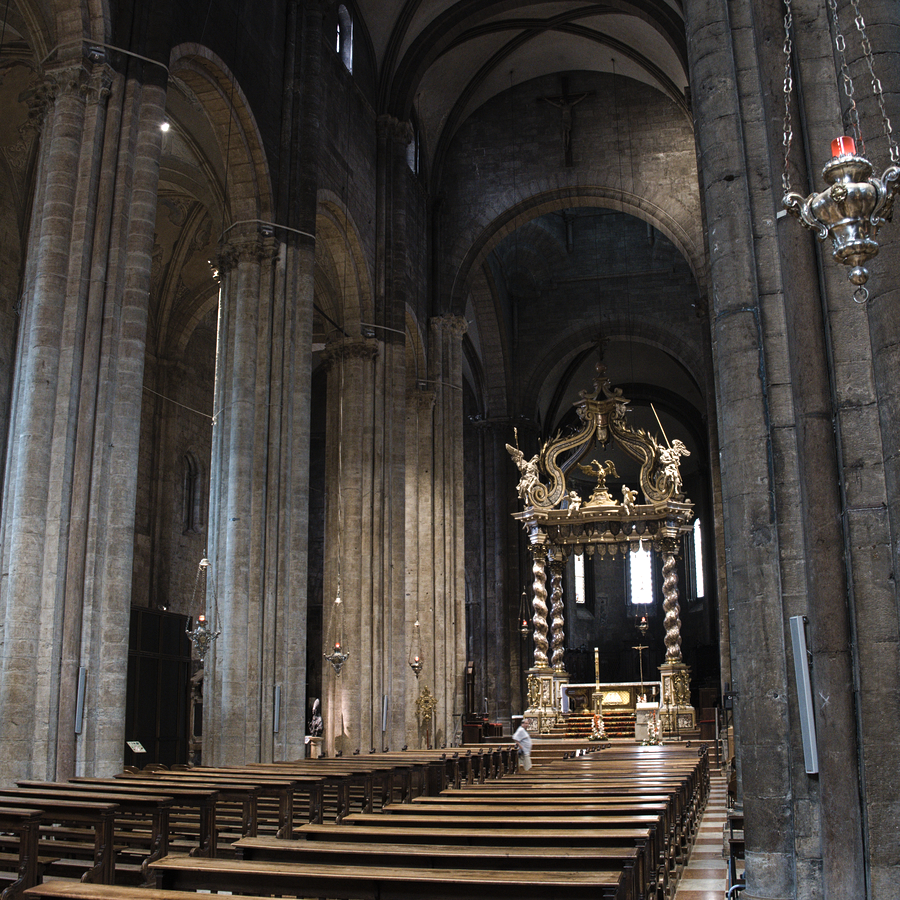
Duomo interior, Trento, Italy.
Visitors can go beneath the main floor of the Duomo and view the archaeological remains of the earlier church. Exhibitions include funerary art, a couple of sarcophagi, and some fragments of an ancient Roman mosaic.
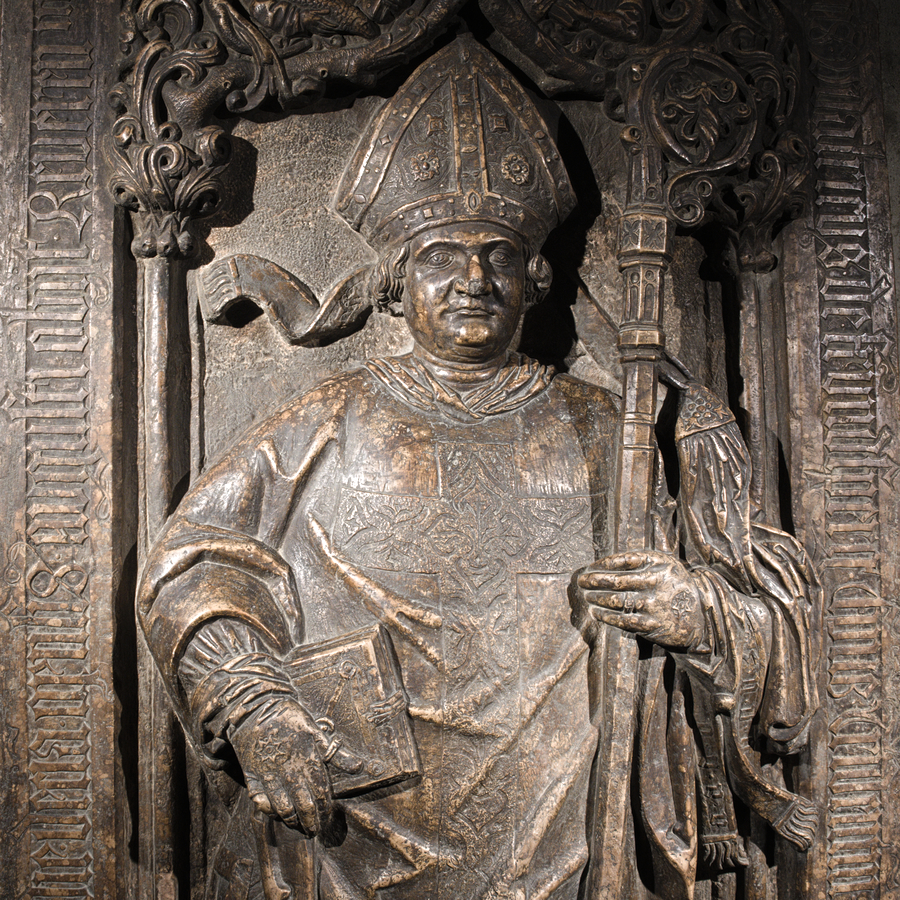
The tombstone of Bishop Giorgio Hack
Onward. After a pizza luncheon, we hiked across town to the Castello del Buonconsiglio (lit.: 'good counsel'). The castle was the primary residence of the Prince-Bishops of Trento. In the medieval period, Northern Italy was under the control of the Germanic, Holy Roman Emperors. In order to enforce their will, the emperors co-opted high-ranking members of the church (bishops and abbots) and gave them secular power to help the emperor secure his lands. The Emperor placed the bishops of Trento over much of the South Tirol, conferring great power, prestige, and wealth upon these churchmen.
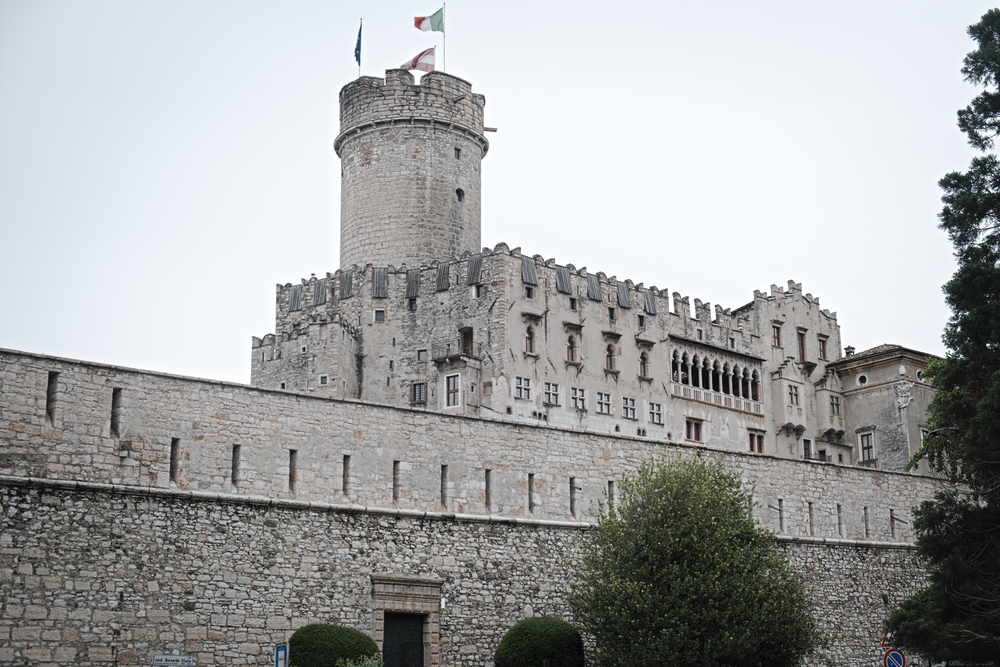
Castello del Buonconsiglio, the bishops' humble abode.
The palace is a testament to the position the bishops held in society. It is a vast stone complex that has evolved from a defensive fortification to a Renaissance-era country home. During the first world war, the Austrian army seized the building and converted into a fort. It has now been restored to its original splendor.
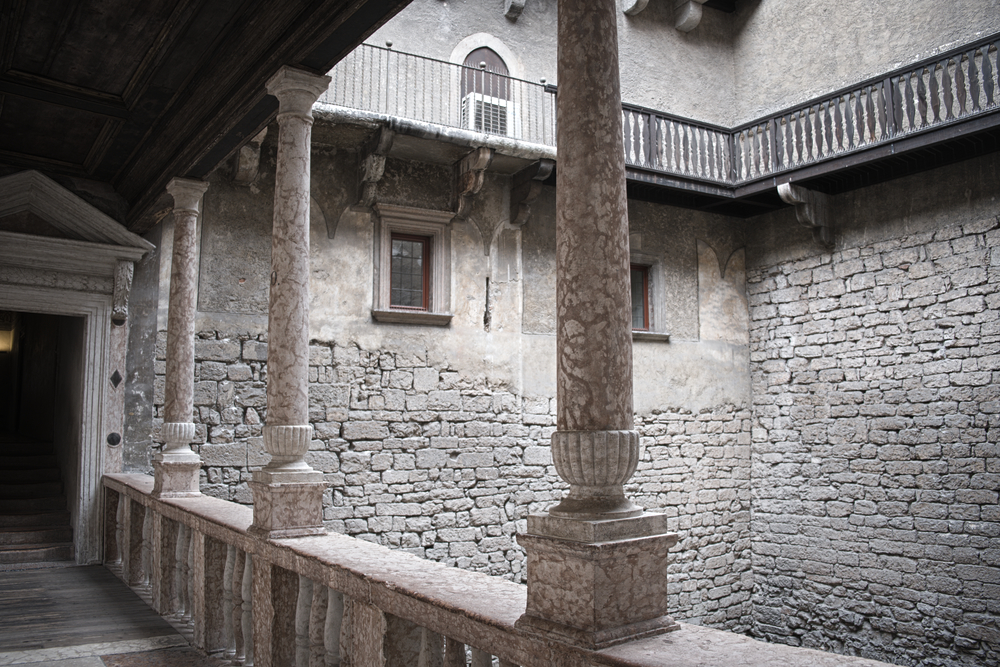
Interior, Castello del Buonconsiglio, Trento, Italy
And how splendid! Today the Castello serves as a museum. Wandering along the great stone staircases, we passed through the different periods of its life (Roman, Medieval, Renaissance). We viewed art and artifacts from each of these eras and marveled at the wealth that was displayed in each chamber.
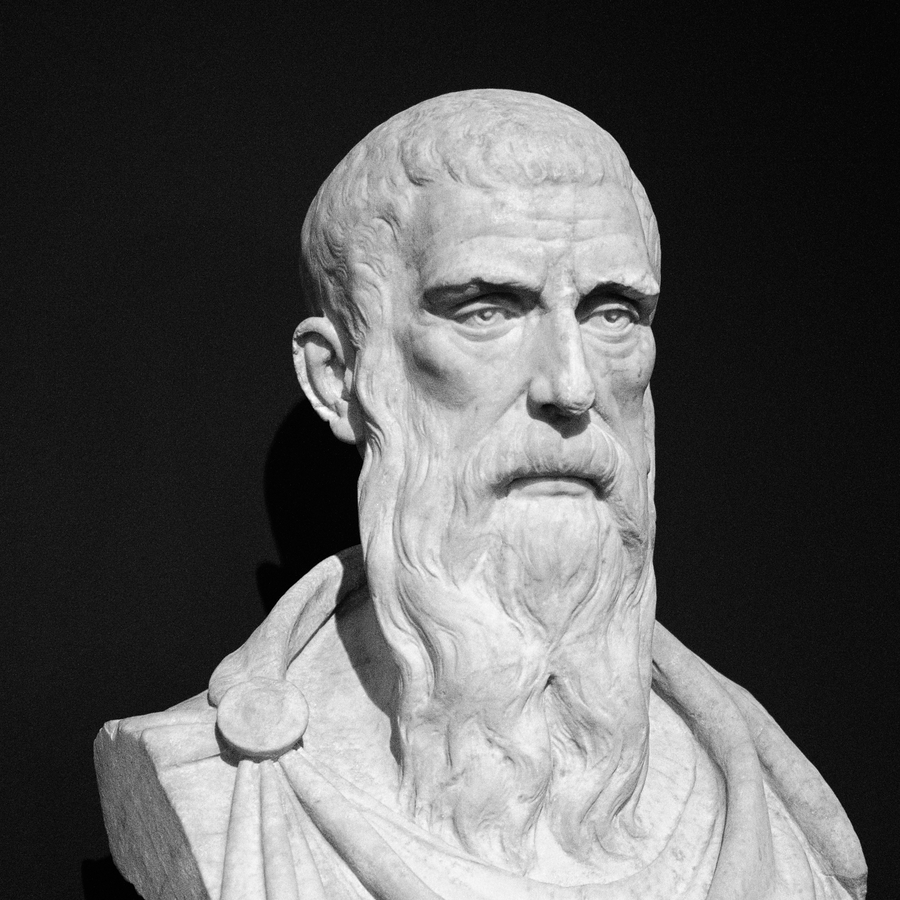
Today's Selfie
Ultimately, the Castello and the city itself defeated us. The clock and road fatigue warred against us. There was so much more to see in this town, that I cannot help but hope we will return again sometime in the near future.
Today's distance: 0 KM Total distance: 195.86 KM
If you are enjoying this series, why not subscribe to Richard's monthly newsletter, What's New in Old News? The Peripatetic Historian is on the road, roaming the world and compiling fresh adventures. Don't miss out. Click here to join the legions of above-average readers who have already subscribed.